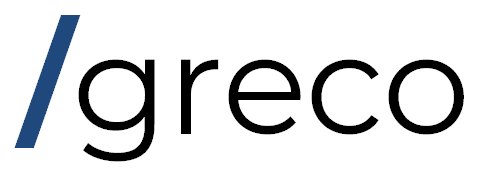Retirement Web Experience
Redesigned a Retirement Web Experience for 4m Users
I. Context & Background
In 2020, I set out to build a new retirement dashboard for 4m plan participants, with my company allocating $8m over a period of 16 months to execute within three operational “battlefront” initiatives: dashboard (my initiative), self-service, and personalization.
As the product manager, I aimed to develop a new experience that helped customers understand whether they are on track for retirement. Features developed included: balance visualization, allocations, contributions, visualizations, OnTrack® retirement analysis, peer comparison, account balance projection, accumulation, drawdown, and healthcare.

II. Objectives
Any product solution must be posed in terms of what problems that solution is intended to alleviate. As a retirement provider, we have a responsibility to users to help them understand whether they are on the right track for retirement. Moreover, we have obligations to plan sponsors and third parties that are contractually obligated in plan-level rules. Given the trends occurring in the industry toward holistic financial wellness, we targeted this theme a north star for development.
In short, we set out to design a best-in-class retirement experience that helps customers understand their holistic financial picture and goes beyond a typical retirement analysis by incorporating healthcare costs, risk factors, next best actions, emergency fund, and savings rate. Long gone are the days of mailing an annual statement as the only customer touchpoint.
This is an ambitious goal. Many recordkeepers struggle to do one of these things well. Often, such a mission is fraught with debate over data sharing, third party permissions, customer consent, and a litany of potential privacy issues. For example, in order to provide a customer with suggested next steps to take on his or her account, we must gather an inordinate amount of data, which then must be processed, and then written to a rules engine, and served back to the user in some form. At each of these steps are potential legal and compliance hurdles, and we needed to make sure we were proposing to use customer data as judiciously and safely as possible.
In defining the roadmap, we were given KPIs from our executive leadership, which were: change in AUM, operating revenue, lost business, online withdrawals, call center volume, Managed Advice subscriptions, OnTrack participation, new contributions, and new accounts. The entire project revolved around hitting various goals within each of these silos. Hey, did I say this was going to be easy?

My personal objectives were:
- Capture business requirements
- Write user stories
- Work through UX and design process
- Coordinate with BAs, devs, and designers
- Lead a product vision
- Test the product
- Launch the product on time and under budget
- Recommend areas of improvement
III. Methodology
Step One: Understand
When I begin a new project, one of my first objectives as product manager is to understand the market need. How did we stack up to the competition? Who is our competition? What were they doing, and why? Generally, the retirement space is segregated by market size, with large players such as Vanguard and Fidelity catering to the largest companies. Transamerica is a mid-market and small-market retirement competitor, targeting companies under $100m in revenue. Competitors differ in how they offer retirement products; some focus on transactional capabilities, while others focus on holistic financial wellness. These strategies ultimately depend on how the company makes money. Were we setting out to cater to high net-worth users? Novices? Financial planners?
Another critical component to understanding what to build is identifying the problem. After all, as product managers our job is to “own the problem,” from two critical perspectives: the business, and the user. It has been debated which perspective is ultimately worth focusing on the closest. Naturally, many executives will tell you the business problem is that which is worth solving because the financial success of the company is directly tied to it. UXers will sometimes go toe-to-toe with such managers, asserting that it’s “all about the user” and that the user doesn’t care about business goals. Both of these perspectives are correct. A company cannot build a product divorced from the economic realities of earning enough revenue to outweigh expenses. Likewise, ignoring users occurs at the business’s peril. Disappoint them and they will flock to competitors. Simple as that.
Step Two: Plan
The planning for this project reached a key milestone when we were able to articulate with a degree of confidence what the business problems and user problems were. One convenient way to plan for what to build is to frame the problems a user story. The version I prefer to use is an extended one, factoring in the business problems and goals separately, because I think it helps explain things better.
“As [the business], I have a [problem], and want to achieve [goal], so that [reason].”
The nice thing about this framework is that it can be repurposed for the user’s perspective as well:
“As [the user], I have a [problem], and want to achieve [goal], so that [reason].”
In planning what to build, we made sure that each of these user stories tied to an overall theme. For example, if a user needed help deciding what actions to take in retirement planning, that problem would be categorized as personalization. This was done in concert with our UX team, who helped us refine this methodology.
Moreover, the user stories were tied to individual features in a product catalog. From there, we wrote epics tied to each of these components and tagged them in Jira.
Step Three: Build
Working with our delivery partner, McKinsey, we implemented the RTS “Reset, Transform, Sustain” methodology to achieve transformational change within the retirement business. Internal parties included: product managers, IT, design, research, and business stakeholders. External parties included: offshore IT, & BA. Essentially, we were funded for a period of under two years to completely re-build what a user sees when navigating to the online retirement portal.
When it was time to start building, we built customer journeys and a product roadmap. We implemented an agile methodology (Scrumban) in two week sprint cycles. Jira was the tool of choice for epic and user story capture, and Write was utilized on the design team. Miro was our tool of choice for sharing and ideating.
The design process posed some challenges at first. We struggled at times to develop compelling ways to show advanced financial data. According to market research, there is a broad variation in how users interpret and respond to data. Some users prefer analytical comparison charts, others prefer narrative experiences that answer actual questions, while other users gravitate to peer comparisons. To complicate matters, power users prefer different tools and graphics than novices. Because of this divergence in customer preference, I challenged our design team to develop a suite of informational displays that catered to our target customer. Ultimately, we landed on a design that met our organization’s expectations.
With the design process ongoing in the background, we conducted daily backlog refinement sessions. These sessions were comprised of myself, business analysts, developers, and stakeholders. The critical nature of these sessions cannot be overstated. Essentially, as the product manager, I offered up the features we wanted to build as a team. The miracle of business analysts is that they ask the difficult questions needed to fully articulate the vision. For example, as product manager, I was not privy to a host of information about how our back-end (many of which were build in-house) systems operated, and these limitations affected what we were able to deploy. Business analysts, in concert with SMEs, assisted us in refining and developing a vision that was realistic and also approved by the developers.
Over the course of dozens of two-week sprints, we iteratively build a series of consecutive releases: first 1.0, then 1.5, then 2.0, each with the usual UAT and stakeholder interviews needed to measure success.

IV. Results
V. Reflection
Even blank slate projects have significant constraints. Is anything truly “new”? As PM, I had to strike a delicate balance between the free version of our service with the demands of stakeholders representing our premium service. The more we give away for free, the less money they can charge.
Also, since the financial forecasting engine is shared, we were required to scale back features that could impact the premium service. We also descoped many of the features on our roadmap as we moved forward with the project, illustrating the importance of proper estimates. Even the simplest things can take far longer to develop than initially planned because of legacy systems and processes, which adds to the complexity and scope of a project.
This project helped expand my tool set by giving me the knowledge needed to frame problems and develop solutions. Often, we are tempted to offer solutions of our own without the necessary validation. However, this is a trap. Solutions must be validated through user testing regardless of how logical they may be. This project also opened my eyes to the often shifting needs of businesses as projects go on. We did our best to avoid the dreaded scope creep which can derail initiatives by making people take their eyes off the ball too soon. Design by committee, another product management folly, reared its head from time to time. This was avoided by letting professionals weigh in and trusting their knowledge without overriding them. Overall, I grew substantially from this project.
